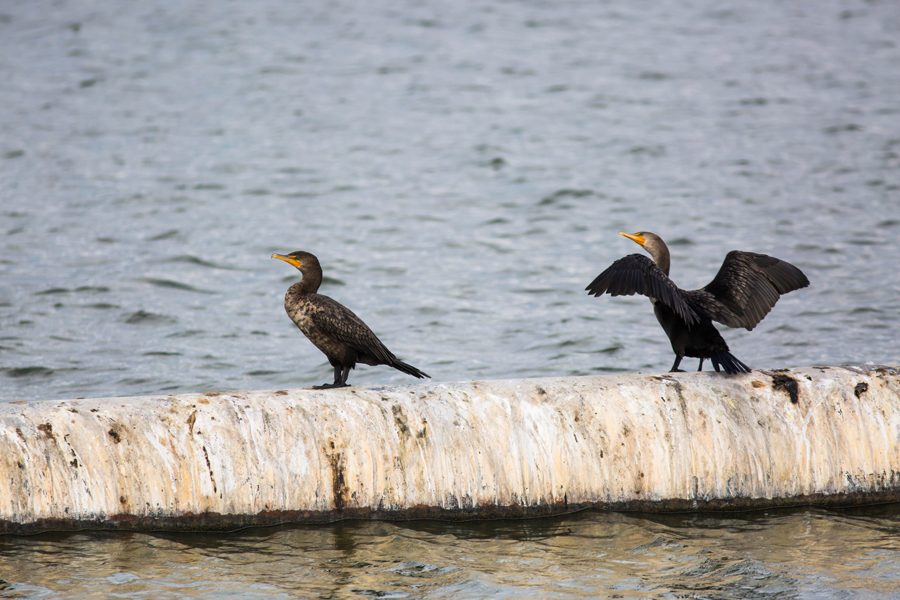The bacterial disease avian cholera has been linked to the die-off of thousands of Double-crested Cormorants in Green Bay, according to the Wisconsin DNR.
In late September, avian cholera was confirmed in cormorants submitted for necropsy to the USGS-National Wildlife Health Center in Madison. These cormorants were collected from the Cat Island causeway in Green Bay.
Avian cholera is a common waterfowl disease that most frequently affects waterfowl and coots. Scavenger bird species and other waterbirds can also be affected. It is seen annually in Western states in Snow Geese and Ross's Geese.
Wisconsin has not had an outbreak in wild birds since 1980, though reports of this disease in domestic backyard birds occur more regularly in the state. The bacterial strain that affects birds does not generally affect people, and the human disease known as cholera is not the same as avian cholera.
Avian cholera is caused by the bacterium Pasteurella multocida and is highly contagious among birds, swiftly spreading through large congregations of waterfowl. Transmission of the bacteria can occur through bird-to-bird contact or from contact with infected carcasses, water, soil, boots and equipment. The bacteria are easily killed with most disinfectants, including 10% bleach.
Generally, the first sign of an outbreak of avian cholera is the discovery of many dead birds. In this case, the DNR was alerted to the die-off by Green Bay area birders.
The DNR’s Joshua Martinez said the agency had conducted a bi-weekly check of the causeway, cleaning up more than 3,800 carcasses, and was continually monitoring the site until freeze- up (which will kill the bacteria) and removing any carcasses to prevent spread.
“This process has been a long and time consuming issue, but we are doing everything we can to reduce chances of this disease from spreading into migratory waterfowl in the bay.…. The cormorants were the primary species to die (99% of carcasses) during this die-off event. We have contacted all wildlife staff and partners in Wisconsin to keep an eye open for any die-off events in their areas and luckily no one has reported any more issues.”
DNR Wildlife Veterinarian Lindsey Long said, “The Wisconsin public plays a vital role in monitoring our wildlife populations in the state, and we are appreciative of their diligence in informing our biologists of any unusual mortalities they find. Should citizens observe any unusual mortality events of waterfowl, typically involving five or more birds, we ask that they contact their local county wildlife biologist.”
To report dead waterfowl, please contact a county wildlife biologist. Please be prepared to identify the specific location where the carcasses were seen and their approximate numbers.
For additional information, contact Lindsey Long, DNR Wildlife Veterinarian/ Acting Wildlife Health Section Chief, Bureau of Wildlife Management at 608 219-5038 or lindsey.long@wisconsin.gov


